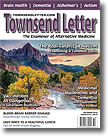|
Despite its being one of the most common skin disorders affecting more than 16 million Americans, the pathogenesis of rosacea remains uncertain and controversial.1 Although the symptom triggers are well recognized, the underlying causes of rosacea have not yet been completely identified. Most agree that the pathophysiology involves a complex interaction of different factors, which lead to a chronic inflammatory and vascular response.
Transient or persistent central facial erythema, telangiectasia, and associated papules and pustules most often characterize rosacea. Rosacea signs and symptoms may be exacerbated by a number of environmental and lifestyle factors that differ from one individual to another. Common triggers include alcohol, spicy or hot foods, foods high in histamines (red wine, aged cheeses, yogurt, beer, cured pork products such as bacon, etc.), stress, caffeine, chronic sun exposure, cold weather, and overly dry climates.
Although epidemiological studies indicate a genetic link, a rosacea gene has not been detected.2 Other causes or correlative factors that have been associated with rosacea are the dysregulation of the cutaneous innate immunity, overgrowth of the Demodex folliculorum mite in the skin, small intestinal bacterial overgrowth (SIBO), Helicobacter pylori infection, and increased vitamin D3 signaling.3–11
Innate Immune System Anomalies: Antimicrobial Peptides Indicated in Rosacea Inflammation
Exciting new research indicates that rosacea may be caused by an overactive or excessive inflammatory immune response.3,4,12 Our skin is the first barrier against the outside environment. The skin is equipped with various innate mechanisms against invading microbial pathogens. Antimicrobial peptides (AMPs) play a key role in cutaneous innate immunity and help protect against microbial infections. Cathelicidins were among the first AMPs identified in human skin. Cathelicidins have antimicrobial activity that kills pathogens directly; as well, they initiate a powerful response to infection resulting in cytokine release, inflammation, and a cellular response.4 Research has shown that rosacea sufferers have an abnormally high level of cathelicidin peptides in their facial skin and that the proteolytically processed forms of cathelicidin peptides found in rosacea are different from those present in normal individuals.13,14 These "rosacea" forms of cathelicidin peptides promote increased inflammation, whereas the types most commonly found on normal skin function mostly as antibiotics and have little inflammatory activity.14 One of the most common forms of cathelicidin found in rosacea is LL-37. In healthy skin, cathelicidin expression is barely detected in keratinocytes. During infection or injury, cathelicidin production is found in much higher amounts.. When cathelicidin LL-37 is upregulated it causes inflammation, erythema, and telangiectasia.3,10
Once the mechanisms of cathelicidin gene regulation and peptide processing become more evident, treatment strategies will be clearer to mediate the effects of cathelicidin and decrease the symptoms of rosacea.
Demodex Folliculinum Mite: Skin Microbe Inducing Rosacea Symptoms
Rosacea can be treated with a variety of antibiotics, both oral and topical, such as tetracycline or metronidazole. Current research confirms that in many cases of rosacea, particularly those that have a papulopustular subtype, there can be an overgrowth of a normal skin mite and bacteria that it harbors.5,16–19
The Demodex folliculinum mite can be a normal skin microbe found in hair follicles and sebaceous glands. It is commonly found on facial skin including forehead, cheeks, chin, and nasolabial folds.19 This parasite can create inflammation, directly and indirectly, which is seen in the papules and pustules as well as granulomas in rosacea-affected skin.17 Studies have shown that the density of Demodex mites in the skin of rosacea patients is higher than in nonrosacea patients, which suggests a role for these mites in the initiation of rosacea symptoms.
Additionally, a variety of microbiota in Demodex mites, such as the bacterium Bacillus oleronius, have been isolated in rosacea-affected skin.18 B. oleronius is known to be sensitive to the antibiotics used to treat rosacea.16 It appears that not only can overgrowth of D. folliculinum play a role in pathogenesis of rosacea but also there could be an additional bacterial component.5
Small Intestinal Bacterial Overgrowth: Correlation of SIBO and Rosacea
SIBO is a condition wherein there is an overgrowth of bacteria in the small intestine. The bacterial overgrowth can be composed of both native and nonnative bacteria causing excessive fermentation, inflammation, or malabsorption in the small intestine.20 The prevalence of SIBO in rosacea patient populations has been found to be anywhere from 46% to 66%.6,7 A recent double-blind, controlled study showed that after SIBO eradication with antibiotic treatment, 71% of patients (28/32) had complete clearance of rosacea. Patients treated with placebo had no change in rosacea symptoms or had symptoms worsen. Once the placebo patients were treated with antibiotic therapy, 75% of patients had resolution of rosacea symptoms.6
The current data demonstrate that rosacea patients often have a significantly higher SIBO prevalence than non-rosacea patients Furthermore, in a majority of patients, treatment and eradication of SIBO significantly reduced all rosacea symptoms.
Helicobacter Pylori: Gastric Bacterial Infection Triggers Rosacea Symptoms
Helicobacter pylori infection as a causative factor in rosacea has long been controversial. Recent studies have provided more evidence that H. pylori is associated with rosacea and could certainly be an important factor in the development of rosacea symptoms.8,9
H. pylori is a bacterium that survives in the stomach or duodenum. It is highly adapted to survive the gastric environment where it lives. It disrupts the mucosal layer underlying the gastroduodenal tissue, making this underlying tissue more susceptible to acidic damage. The innate immune response to H. pylori also causes an inflammatory reaction, which causes further tissue injury.8,9
In a recent study, 65% of patients with rosacea were found to have a positive H. pylori serology and, once treated, rosacea symptoms significantly improved. It is important to point out that not all patients had actual H. pylori or gastric symptoms.9 However, it has not been determined if patients without gastric symptoms have an increased prevalence of H. pylori infection.8
Vitamin D3
As discussed earlier, abnormal cathelicidin peptide processing and function has been linked to the increased inflammation and angiogenesis in rosacea. Until recently it has been unknown what underlying mechanisms were responsible for cathelicidin regulation. It appears that the vitamin D3 pathway is a major regulator of cathelicidin expression.4 This could explain why rosacea occurs mainly in the face and is aggravated by ultraviolet (UV) light/sun exposure. It is well known that UV light triggers the activation of vitamin D3. In turn, vitamin D3 synthesis induces cathelicidin peptide expression in the skin, particularly in the keratinocytes.3,10,15
A deeper understanding of the molecular mechanisms is needed in order for therapies to be initiated. However, therapeutic interventions could involve targeting the vitamin D3 pathway, thereby decreasing the cathelicidin overexpression and inhibiting the skin aggravating cathelicidin fragments.15
Conclusion
It is clear that the development of rosacea is multifactorial and complex. Fortunately, ever-expanding data show that the symptoms of rosacea can be managed most effectively if we can treat multiple issues and triggers at one time.
Avoiding known triggers is key to the management of rosacea symptoms. Many clinics test for SIBO and H. Pylori routinely in rosacea-affected patients. Additionally, D. folliculinum overgrowth is tested for and treated with topical and/or oral antibiotics and anti-inflammatory medications.
Managing symptoms and giving patients both physical and aesthetic symptom relief is very important. However, continuing the research on the innate immune system and its function in the development of rosacea is imperative in developing possible treatments of the underlying cause of the disease.
Notes
1. Two AM, Del Rosso JQ. Kallikrein 5-mediated inflammation in rosacea: clinically relevant correlations with acute and chronic manifestations in rosacea and how individual treatments may provide therapeutic benefit. J Clin Aesthet Dermatol. 2014 Jan;7(1):20–25.
2. Tüzün Y, Wolf R, Kutlubay Z, Karakuş O, Engin B. Rosacea and rhinophyma. Clin Dermatol. 2014 Jan–Feb;32(1):35–46. doi:10.1016/j.clindermatol.2013.05.024.
3. Reinholz M, Ruzicka T, Schauber J. Cathelicidin LL-37: an antimicrobial peptide with a role in inflammatory skin disease. Ann Dermatol. 2012 May;24(2):126–135. doi:10.5021/ad.2012.24.2.126. Epub 2012 Apr 26.
4. Dombrowski Y, Peric M, Koglin S, Ruzicka T, Schauber J. Control of cutaneous antimicrobial peptides by vitamin D3. Arch Dermatol Res. 2010 Aug;302(6):401–408. doi:10.1007/s00403-010-1045-4. Epub 2010 Mar 10.
5. Jarmuda S, McMahon F, Zaba R, et al. Correlation between serum reactivity to Demodex-associated Bacillus oleronius proteins, and altered sebum levels and Demodex populations in erythematotelangiectatic rosacea patients. J Med Microbiol. 2014 Feb;63(Pt 2):258–62. doi:10.1099/jmm.0.065136-0. Epub 2013 Nov 18.
6. Weinstock LB, Steinhoff M. Rosacea and small intestinal bacterial overgrowth: prevalence and response to rifaximin. J Am Acad Dermatol. 2013 May;68(5):875–876. doi:10.1016/j.jaad.2012.11.038.
7. Parodi A, Paolino S, Greco A. Small intestinal bacterial overgrowth in rosacea: clinical effectiveness of its eradication. Clin Gastroenterol Hepatol. 2008 Jul;6(7):759–764. doi:10.1016/j.cgh.2008.02.054. Epub 2008 May 5.
8. Bhattarai S, Agrawal A, Rijal A, Majhi S, Pradhan B, Dhakal SS. The study of prevalence of Helicobacter pylori in patients with acne rosacea. Kathmandu Univ Med J (KUMJ). 2012 Oct–Dec;10(40):49–52.
9. El-Khalawany M, Mahmoud A, Mosbeh AS, et al. Role of Helicobacter pylori in common rosacea subtypes: a genotypic comparative study of Egyptian patients. J Dermatol. 2012 Dec;39(12):989–995. doi:10.1111/j.1346-8138.2012.01675.x. Epub 2012 Oct 5.
10. Antal AS, Dombrowski Y, Koglin S, Ruzicka T, Schauber J. Impact of vitamin D3 on cutaneous immunity and antimicrobial peptide expression. Dermatoendocrinology. 2011 Jan;3(1):18–22. doi:10.4161/derm.3.1.14616.
11. Dombrowski Y, Peric M, Koglin S, Ruzicka T, Schauber J. Control of cutaneous antimicrobial peptides by vitamin D3. Arch Dermatol Res. 2010 Aug;302(6):401–408. doi:10.1007/s00403-010-1045-4. Epub 2010 Mar 10.
12. Lanier RK, Cohen AE, Weinkle SH. Effects of a facial cream containing the minor alkaloid anatabine on improving the appearance of the skin in mild to moderate rosacea: an open-label case series study. Case Rep Dermatol.2013 Nov 23;5(3):347–56. doi:10.1159/000357019. eCollection 2013.
13. Yamasaki K, Di Nardo A, Bardan A, et al. Increased serine protease activity and cathelicidin promotes skin inflammation in rosacea. Nat Med. 2007 Aug;13(8):975–980. Epub 2007 Aug 5.
14. Yamasaki K, Gallo RL. Rosacea as a disease of cathelicidins and skin innate immunity. J Investig Dermatol Symp Proc. 2011 Dec;15(1):12–15. doi:10.1038/jidsymp.2011.4.
15. Palatsi R, Kelhälä HL, Hägg P. New insights in the pathogenesis and treatment of rosacea. [Article in Finnish.] Duodecim. 2012;128(22):2327–2235.
16. Jarmuda S, O’Reilly N, Zaba R, Jakubowicz O, Szkaradkiewicz A, Kavanagh K. Potential role of Demodex mites and bacteria in the induction of rosacea. J Med Microbiol. 2012 Nov;61(Pt 11):1504–1510. doi:10.1099/jmm.0.048090-0. Epub 2012 Aug 29.
17. Cribier B. Pathophysiology of rosacea: redness, telangiectasia, and rosacea. Ann Dermatol Venereol. 2011 Nov;138 Suppl 3:S184–S191. doi:10.1016/S0151-9638(11)70088-6.
18. Murillo N, Aubert J, Raoult D. Microbiota of Demodex mites from rosacea patients and controls. Microb Pathog. Epub 2014 Apr 23. pii: S0882-4010(14)00047-3. doi:10.1016/j.micpath.2014.04.002.
19. Yücel A, Yilmaz M. Investigation of the prevalence of Demodex folliculorum and Demodex brevis in rosacea patients. [Article in Turkish.] Turkiye Parazitol Derg. 2013;37(3):195–198. doi:10.5152/tpd.2013.43.
20. UpToDate. Etiology and pathogenesis of small intestinal bacterial overgrowth. Available at http://www.uptodate.com. Accessed April 25, 2014.

Dr. Debbie Whittington practices naturopathic family medicine with a focus on digestive issues, hormone balancing, naturopathic dermatology, and fatigue. She is a graduate of Bastyr University and practices in Seattle. Currently, Dr. Whittington is developing a plant-derived skin care line. She believes that by helping patients find the cause of a disease or symptom, they attain and maintain optimal and vibrant living.
|
![]()
![]()
![]()





